






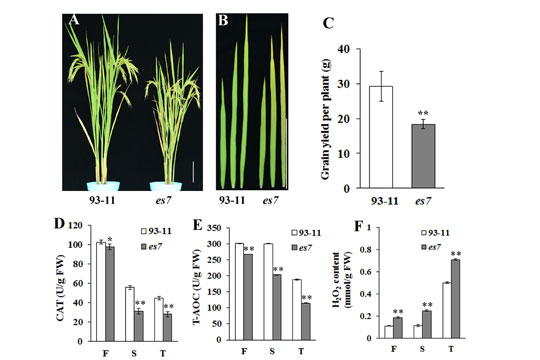

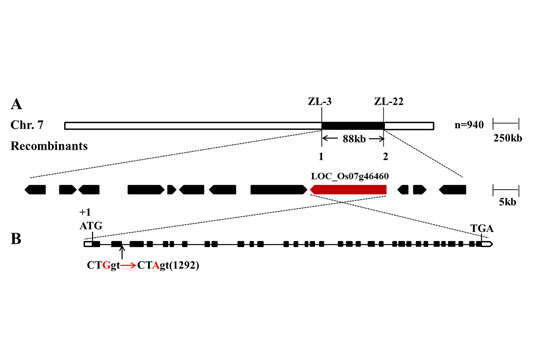
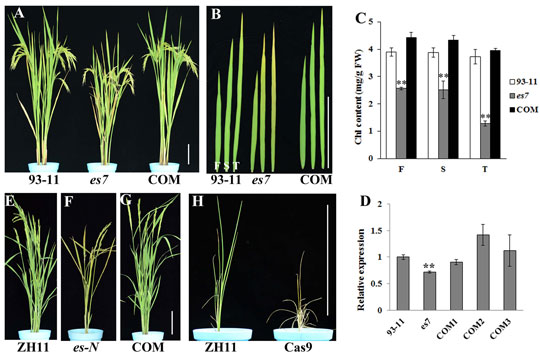

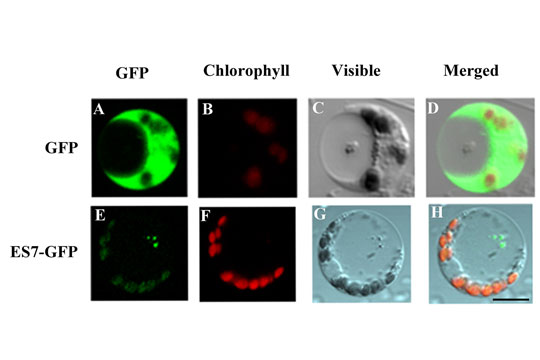
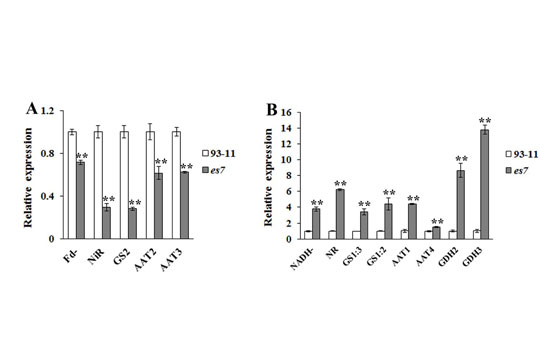
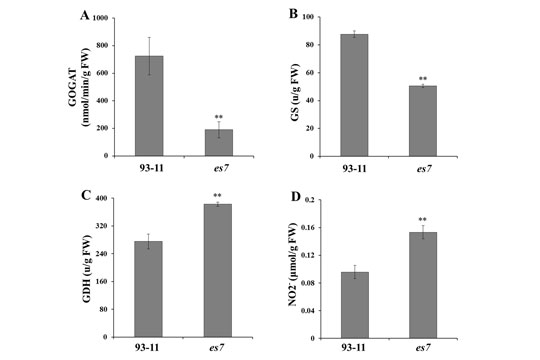
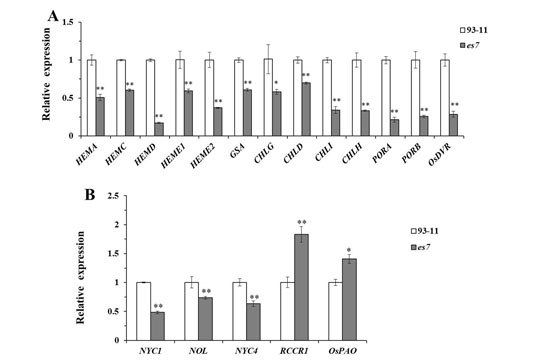
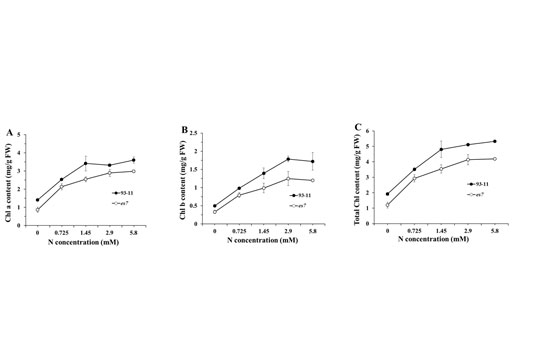

ES7, encoding a ferredoxin-dependent glutamate synthase, functions in nitrogen metabolism and impacts leaf senescence in rice
April 21st, 2017
Nitrogen is a key macronutrient required by plants for growth and development, and important for the yield and productivity of crops. Rice plants grown in paddy fields use ammonium as the major source of inorganic nitrogen. It is established that the glutamine synthetase/glutamate synthase (GS/GOGAT) cycle is the only route for primary ammonium assimilation in plants grown under normal conditions.
Recently, researchers from China National Rice Research Institute (CNRRI), Chinese Academy of Sciences successfully identified and characterized an early senescence 7 (es7) mutant. The result showed that the leaves of the es7 mutant begin to senesce at the tillering stage about 60 day after sowing, and become increasingly senescent as the plants develop at the heading stage. When es7 plants are grown under photorespiration-suppressed conditions (high CO2), the senescence phenotype and chlorophyll content are rescued. qRT-PCR analysis showed that senescence-associated genes were up-regulated significantly in es7. A map-based cloning strategy was used to identify ES7, which encodes a ferredoxin-dependent glutamate synthase (Fd-GOGAT). ES7 was expressed constitutively, and the ES7 protein was localized in chloroplast. qRT-PCR analysis indicated that several genes related to nitrogen metabolism were differentially expressed in es7. Further, chlorophyll synthesis-associated genes were significantly down-regulated in es7. In addition, when seedlings are grown under increasing nitrogen concentrations (NH4NO3) for 15 days, the contents of chlorophyll a, chlorophyll b and total chlorophyll were significantly lower in es7. This work demonstrated that ES7 is involved in nitrogen metabolism, effects chlorophyll synthesis, and may also associated with photorespiration, impacting leaf senescence in rice.
This work was supported by the National Key Transform Program (2014ZX08001-002), Zhejiang Provincial Natural Science Foundation of China(Grant LY16C130005), the Agricultural Science and Technology Innovation Program of Chinese Academy of Agricultural Sciences (CAAS-ASTIP-2013-CNRRI), the National Natural Science Foundation of China (Grant No. 31501290). The research finding has been published in Plant Science online on March 14, 2017 (DOI:10.1016/j.plantsci.2017.03.003.). More details are available on the links bellow: http://www.sciencedirect.com/science/article/pii/S0168945216306549
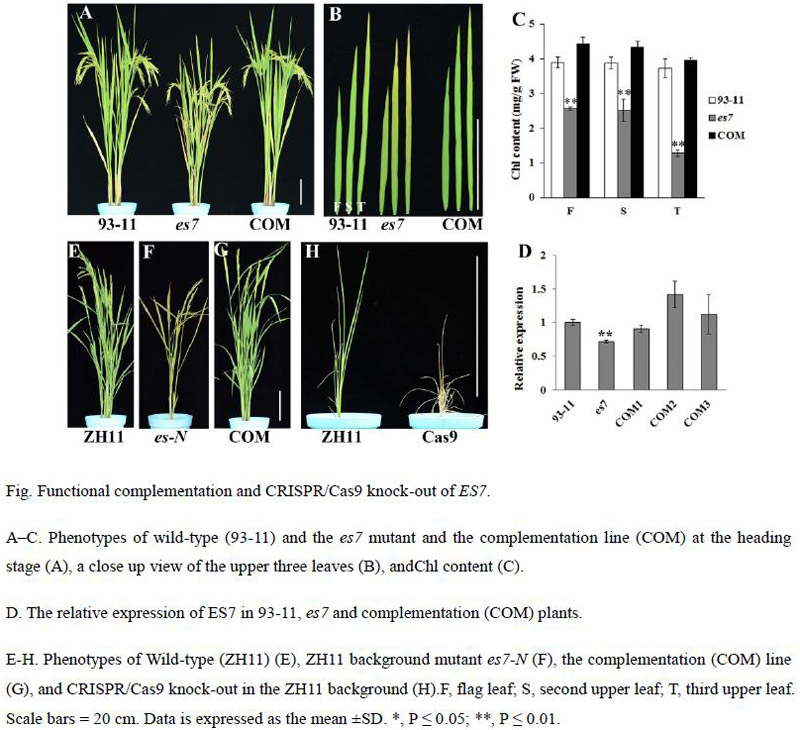
· Study Reveals How the Clock Component OsLUX Regulates Rice Heading
· Scientists Further Unravelled the Underlying Mechanism of Heading Date Control in Rice
· Improving the efficiency of prime editing in rice
· A New Infection Mechanism of Ustilaginoidea virens is Revealed
· Scientists Further Reveal the Infection Mechanism of Ustilaginoidea virens
CNRRI Today
Copyright © 2014- China National Rice Research Institute